Three Bold Moves Hospital CEOs Can’t Afford to Delay
 David Mednick, Chief Financial Officer | October 30, 2025
David Mednick, Chief Financial Officer | October 30, 2025
Nearly 70 hospital CEOs exited in the first half of 2025, and many did so without a succession plan. The reasons don’t matter anymore. What matters is this: their replacements now inherit collapsing margins, impossible labor shortages, aggressive regulatory change, and patients whose expectations have never been higher.
This is not the time for cautious leadership. The standard way of doing things is broken. Success depends on making bold, urgent, necessary decisions — and outsourcing key services to experts who can do them cheaper, faster, and better than you can build internally.
This is about control, not comfort.
Outsourcing isn’t a theoretical solution. It’s the only way to get proven, expert-driven results at scale without adding headcount or waiting years to build programs that already exist. Yet many hospital leaders resist this shift. Why? Fear of perceived loss of control. Internal politics. Compensation entanglements. But none of that changes the reality: doing nothing will cost you more (in dollars, outcomes, and staff retention) than doing something bold.
Outsourcing isn’t a compromise. It’s a competitive advantage.
1. Virtual ICU Care: Eliminate Burnout. Reduce Mortality.
ICUs are past the point of struggling. They are in a staffing crisis. Most hospitals cannot hire enough qualified intensivists or experienced ICU nurses, and staffing gaps are being filled by clinicians who are undertrained for critical care.
The Move: Don’t try to build up the in-house team you need for a fully staffed ICU. You can’t. Instead, outsource it to a national provider who has already built one virtually with 24/7 intensivist coverage, proven workflows, and experienced leadership ready to deploy immediately.
Why Now:
- It costs far less than trying to staff your ICU in-house.
- It improves outcomes: fewer readmissions, shorter stays, better mortality rates.
- It keeps high-acuity cases in-house, protecting your hospital’s revenue and reputation.
Dr. Diego Reino: “Our clients are seeing dramatic reductions in mortality and readmissions and their provider burnout plummets at the same time.”
2. Virtual Sepsis Management: Protect Millions in Medicare Reimbursement
Sepsis is not a “clinical challenge.” It’s a financial emergency. CMS has implemented new sepsis rules that rank hospitals on a national bell curve. Fall behind, and you could lose up to 2% of your total Medicare reimbursement instantly.
The Move: Outsource your sepsis program to a provider with trained staff, real-time alerts and standardized protocols that have already been tested and deployed nationwide. Don’t lose months trying to build what already exists.
Why Now:
- Avoid millions in Medicare penalties.
- Eliminate SEP-1 variability across providers.
- Achieve national benchmark performance with zero IT build or internal training burden.
Lisa-Mae Williams: “A well-executed virtual sepsis program eliminates delays, ensures accurate documentation, and positions your hospital on the right side of the Medicare curve fast. That’s real money saved.”
3. Telestroke & Virtual Neurology: Minutes Matter. So Do Millions.
When stroke hits, you have minutes to respond. Yet few hospitals have access to neurologists 24/7, and those that try to build internal coverage waste millions on idle staffing and inconsistent care.
The Move: Use an outsourced telestroke model to access neurologists nationwide, instantly, only when you need them.
Why Now:
- Speed: Reduce door-to-needle times and improve recoveries.
- Retention: Keep stroke and neuro cases in-system, protecting downstream revenue.
- Cost: Pay only for the services you use: no idle payroll, no wasted resources.
Anonymous Client: “We cut our transfer rates dramatically. This level of expertise, without full-time hires, would have been impossible to create internally.”
Stop Closing Gaps. Start Eliminating Them.
These are not ideas. They are established, outsourced services already delivering measurable results. The hospitals that are thriving today aren’t doing it alone; they’re partnering with specialized providers who’ve solved these challenges at scale.
At Intercept Telehealth, we deliver Virtual ICU, Virtual Sepsis and Tele-Neurology services that immediately reduce costs, improve care, and protect your bottom line.
If you’re a CEO stepping into the fire, now is the time to act decisively. Others have walked away. You don’t have to. You can fix what they couldn’t.
Contact Intercept now. Waiting is the only risk you can’t afford.



